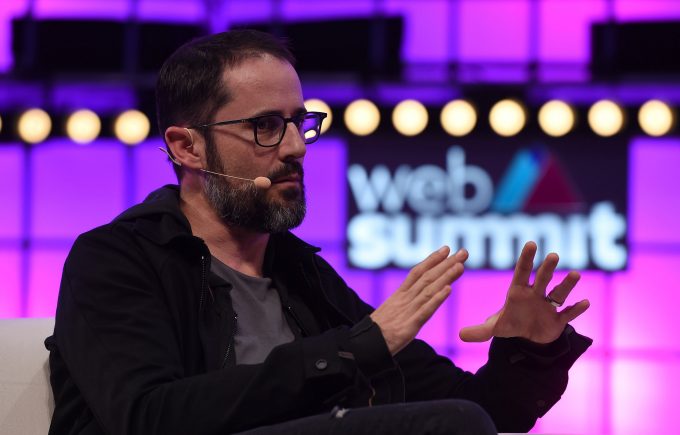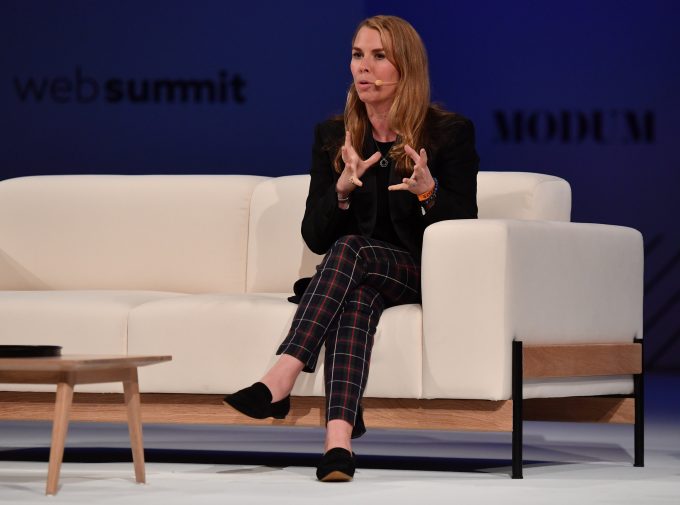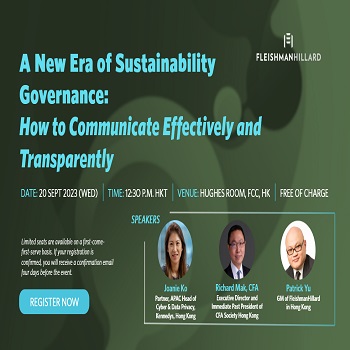Web Summit Day Four snapshot

Image credit: Web Summit
Europe’s largest tech conference was this year dominated by questions about the relationship between technology and humanity. From Tim Burners-Lee’s opening reminder of the origins of the web as a platform for everyone, to criticism of social media’s failures to curb hate speech and fake news and calls for more regulation, the need for increased industry responsibility and accountability was a key theme.
The call to restore public trust in the information, technologies and companies that supposedly serve them made by FleishmanHillard CEO John Saunders was also echoed throughout the conference.
Day Four posed some final questions to leave us thinking about what’s next, before the President of Portugal made a special appearance to close Web Summit 2018.

Image credit: Web Summit
President Marcelo Rebelo de Sousa used the platform to advocate for freedom, tolerance and openness. These are the characteristics of the digital world, he said, the antithesis of the intolerance, racism, trade wars and fake news sweeping the world. And he challenged the crowd of tech pioneers and leaders to fight for their values and principles and leave no one behind in the digital revolution.

Image credit: Web Summit
Valuing quality over quantity to resuscitate media
What the media is dealing with now is a microcosm of one of the biggest problems in society: attention is rewarded for quantity not quality, explains Ev Williams, founder of Medium and co-creator of Twitter.
He remains optimistic though, detecting the start of a transition away from a pure attention economy in publishing to subscription-based business models. He cites TV’s example, where the domination of cheap, attention-seeking reality TV has waned over the past decade and a new artform of deep narrative storytelling has arisen. Publishing, and the internet in general, is in the “reality TV” stage now, but a premium stage is coming. Subscriptions rely on quality: content that makes people feel good about consuming it. And Ev says you need humans to curate this; algorithms cannot detect quality.
Valuing connection in the world of art
There’s always been a close relationship between technology and creativity. In music, we use AI to eliminate repetitive tasks and make better business and creative decisions, says Major Lazer’s Christopher Leacock. So, it’s not something to be afraid of, but to learn how to use. AI can (and will) be used for ad jingles, some film music and creating functional soundscapes for relaxation or focus, for example, but it cannot replace the essential emotional component that a human brings to creation. Patreon co-founder Sam Yam also believes that art depends on shared human connections. He argues that relationships matter; consumers of art care about the creator and their story.

Image credit: Web Summit
Valuing new ideas to rejuvenate traditional fashion brands
A digital pioneer over the past decade, Burberry has embraced social media as a place to build communities. Social comments and connections contribute to the business in a real way, says the brand’s digital marketing VP Rachel Waller. And these valued communities will be nurtured by Burberry for the long term. To dialog with its fan base of young consumers and be open to a wider global audience, Burberry even launched its new logo and monogram on social media. The brand also drops new B Series products on the 17th of every month, with limited availability and for 24 hours only, via its Instagram and WeChat accounts. Collaborations with tech players, like Apple, are also part of its digital strategy.
Swarovski board member Nadja Swarovski is tasked with modernizing the world-famous jewelry company while maintaining its heritage. To remain relevant, the firm collaborates with fashion designers and offers 3D product photos in its online stores to mimic the tactile in-store experience. Using customer insight to drive stocking decisions and enabling fast delivery of orders via regional supply offices is helping Swarovski satisfy customer need for instant gratification.
Championing digital change in retail, Tommy Hilfiger Global CEO Daniel Grieder says it’s all about creating excitement and a reason for people to visit your store, whether it is online or in-person, retail or wholesale. Buyers can now only visit Tommy Hilfiger’s wholesale showroom digitally. This is faster and gives buyers a better overview, plus it is less expensive and more sustainable: instead of flying entire collections around the world, the firm just sends fabric sample swatches instead. Speed, innovation and digitalization are Daniel’s watchwords.
Valuing competition and globalization in China and Silicon Valley
The three panelists on Center Stage to discuss how China has surpassed Silicon Valley refused to rise to the bait and create controversy where none exists. The size of China’s market and the willingness of its population to embrace new tech, such as mobile payments, is driving innovation there, according to William Joy, founder and CEO of Chinese unicorn Video++, who took his young business from the US to China four years ago. He cautions that the dominance of the big tech firms, like Alibaba and Tencent, could stifle future growth as they own entire ecosystems and this shuts the door to new players.
Yang Ge, senior editor with Financial Times China, agrees that China’s people are very open to new tech, but identified a continuing lack of all-new innovation and R&D spend by companies as an issue that has to be resolved before China can truly claim to be the global leader.
Chadwick Xu, CEO, Shenzhen Valley Ventures, believes that US and Chinese startups have much in common; they think big and have a global mindset. European startups seem to be more modest in their ambitions. He believes that globalization generates the most benefit for humankind and that businesses fight for customers, not against other companies. The challenge is that customers are different in each market.

Image credit: Web Summit
Valuing innovative thinking at PITCH
Two of the three startups in this year’s PITCH final aim to enable autonomous vehicles for the mass market, and all three use AI. From some 10,000 applicants, 150 shortlisted companies and 20 semi-finalists, Wayve is the winner of PITCH 2018. Born in the Engineering Department at Cambridge University in the UK, AI-first robotics company Wayve is taking a radical approach and applying deep-reinforcement learning to achieve self-driving cars that can scale to the world – building a data-driven learning-based system rather than hard-engineering a solution with heavily rule-based systems.
Alongside Wayve for the competition’s final showdown on Center Stage yesterday were California’s lvl5 (pronounced “level five”), which makes computer vision software to crowdsource the world’s first vision-only HD maps for self-driving cars, and London-based Factmata, a crowdsourced fact-checking community that leverages AI and human intelligence to protect people and businesses from deceptive or misleading online content.

Image credit: Web Summit
With Web Summit 2018 over, it’s time to mark our diaries for sister show RISE in Hong Kong from July 8-11, 2019. Web Summit will return to Lisbon next November, having inked a deal to remain in the city for the next ten-years. Next year will also see Web Summit’s Collision tech conference move outside the US for the first time, making Toronto its home from May 20-23 in the first of three annual events in the Canadian city.


